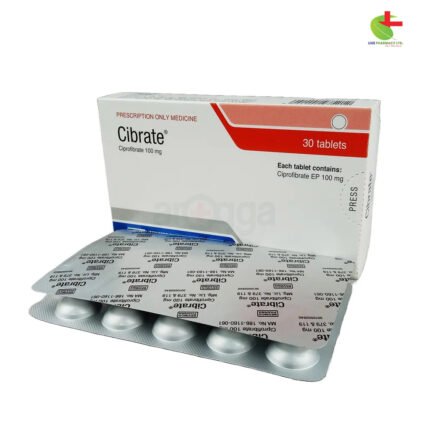Vivanta 50
450.00৳ Strip
- Reduces cardiovascular death risk and hospitalizations for chronic heart failure with reduced ejection fraction.
- Treats symptomatic heart failure in pediatric patients aged one year and older.
- Combines neprilysin inhibitor (sacubitril) and angiotensin receptor blocker (valsartan) for enhanced heart function and blood pressure control.
- Used with other heart failure therapies for comprehensive management of complex cardiac conditions.
 Brand
Brand
|
Beximco Pharmaceuticals Ltd |
|---|---|
 Generics
Generics
|
Sacubitril + Valsartan |
 Type
Type
|
Tablet |
0
People watching this product now!
Category: Medicine
Tags: angiotensin receptor blocker, Beximco Pharmaceuticals, cardiovascular risk reduction, chronic heart failure medication, heart failure medication, heart failure treatment, heart function management, hypertension control, Live Pharmacy, neprilysin inhibitor, pediatric heart failure, sacubitril valsartan
Description
Indications
This medication is prescribed for:
- Reducing Cardiovascular Risk: Decreases the risk of cardiovascular death and hospitalizations for heart failure in patients with chronic heart failure (NYHA Class II-IV) and reduced ejection fraction.
- Pediatric Heart Failure: Treats symptomatic heart failure with systemic left ventricular systolic dysfunction in children aged one year and older.
- Combination Therapy: Used alongside other heart failure treatments, replacing angiotensin-converting enzyme inhibitors (ACEi) or other angiotensin receptor blockers (ARBs).
Pharmacology
This tablet combines two key components:
- Sacubitril: A neprilysin inhibitor, which increases levels of peptides like natriuretic peptides by inhibiting neprilysin via its active metabolite, LBQ657.
- Valsartan: An angiotensin receptor blocker (ARB) that selectively blocks the AT1 receptor, counteracting the effects of angiotensin II and reducing aldosterone release.
Dosage & Administration
- Adults with Heart Failure: Start with 49/51 mg twice daily, increasing to 97/103 mg twice daily after 2-4 weeks if tolerated.
- Patients with Specific Conditions: Reduce starting dose to 24/26 mg twice daily for those not previously on ACEi/ARB, with severe renal impairment, or moderate hepatic impairment.
- Pediatric Heart Failure: Doses are adjusted based on weight. Follow specific dosing guidelines for children aged one year and older.
Interaction
- Avoid Combination: Do not use with ACE inhibitors, aliskiren in diabetic patients, or other ARBs.
- Potassium-Sparing Diuretics: May increase serum potassium levels.
- NSAIDs: Risk of renal impairment may be elevated.
- Lithium: Increased risk of toxicity.
Contraindications
- Hypersensitivity: Contraindicated in patients allergic to any component.
- History of Angioedema: Not suitable for those with a history of angioedema from ACE inhibitors or ARBs.
- Concomitant Use: Avoid use with ACE inhibitors or aliskiren in diabetic patients.
Side Effects
- Common: Angioedema, hypotension, impaired renal function, hyperkalemia, cough, dizziness.
- Rare: Hepatic issues, anemia, blurred vision, increased pancreatic enzymes.
Pregnancy & Lactation
- Pregnancy: Safety not established; limited studies available.
- Lactation: Avoid use during breastfeeding due to minimal drug levels in milk.
Precautions & Warnings
- Angioedema: Monitor closely; avoid if there’s a history of angioedema.
- Hypotension: Monitor blood pressure and renal function; adjust dosage as needed.
- Hyperkalemia: Periodically check serum potassium levels, especially in at-risk patients.
Use in Special Populations
- Pediatric: Safety and effectiveness not established in children under one year.
- Geriatric: No significant pharmacokinetic differences observed in elderly patients.
- Renal Impairment: Adjust starting dose for severe renal impairment.
- Hepatic Impairment: No dose adjustment needed for mild hepatic impairment; not recommended for severe hepatic impairment.
Overdose Effects
- Symptoms: Likely to cause hypotension. Symptomatic treatment is recommended.
- Hemodialysis: Unlikely to remove due to high protein binding.
Storage Conditions
- Store: Keep in a dry place, below 30°C. Protect from moisture and keep out of reach of children.
Reviews (0)
Be the first to review “Vivanta 50” Cancel reply
About brand
Shipping & Delivery













Reviews
There are no reviews yet.